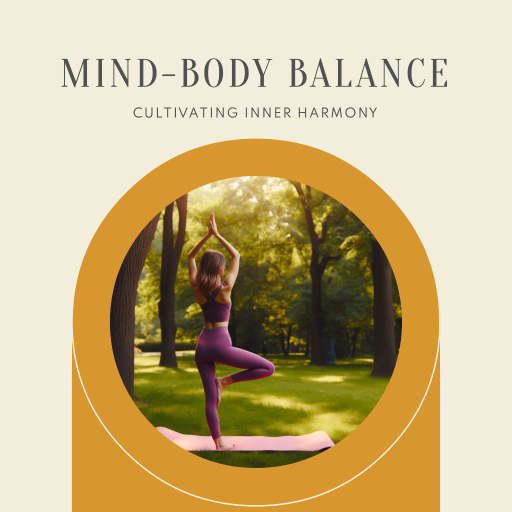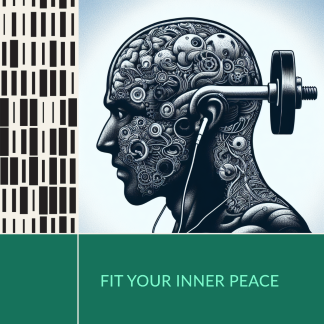Yoga: Inner Balance Unveiled
What is Yoga?
Yoga is a centuries-old practice that harmonizes the body, mind, and spirit. Rooted in ancient India, it encompasses physical postures (asanas), controlled breathing (pranayama), and meditation techniques. Yoga enhances flexibility, strength, and balance while fostering mental clarity and inner peace. Its holistic approach promotes relaxation, reduces stress, and improves overall well-being. Yoga offers a diverse range of styles, making it accessible to individuals of all fitness levels and needs. This ancient practice continues to be embraced globally as a pathway to physical and mental transformation and a healthier, more balanced life.

History and Philosophy of Yoga
The history and philosophy of yoga are deeply intertwined with the cultural and spiritual evolution of ancient India. Yoga’s origins can be traced back over 5,000 years, with the earliest references found in the Indus Valley civilization. The philosophical underpinnings of yoga are largely rooted in the sacred texts of India, such as the Vedas and Upanishads. The development of yoga as a systematic practice can be attributed to the sage Patanjali, who compiled the Yoga Sutras around 200 CE.
Patanjali’s Yoga Sutras serve as a foundational guide to the philosophy of yoga, emphasizing the eight limbs of yoga, which include ethical principles (yamas and niyamas), physical postures (asanas), breath control (pranayama), sensory withdrawal (pratyahara), concentration (dharana), meditation (dhyana), and the ultimate state of self-realization (samadhi). This framework provides a comprehensive path towards self-discovery and spiritual awakening.
Yoga’s philosophy transcends physical fitness; it seeks to unite the individual self (Atman) with the universal consciousness (Brahman). The core principles of yoga encompass compassion, mindfulness, and the pursuit of inner peace. Over the centuries, yoga has evolved into various schools and styles, each emphasizing different aspects of the practice, from the gentle, alignment-focused Iyengar yoga to the dynamic flow of Vinyasa yoga.
The history and philosophy of yoga are not merely a relic of the past; they continue to influence the way millions of people across the globe approach their physical and mental well-being. Understanding the profound roots of yoga allows practitioners to delve deeper into its transformative potential and cultivate a holistic sense of self-awareness and spiritual growth.
Astang Yoga
Ashtanga Yoga, a dynamic and structured form of yoga, emphasizes synchronization of breath and movement. Comprising a set series of postures, this practice promotes strength, flexibility, and mental focus. It’s characterized by a disciplined approach that encourages self-awareness, purification, and a deep connection between mind, body, and spirit.
Yama
“Yama” refers to ethical guidelines, encompassing principles of non-violence, truthfulness, and moral conduct, shaping one’s behavior and character.
Niyama
Niyama in Ashtanga Yoga encompasses self-discipline and inner observances, such as purity, contentment, self-study, and devotion, fostering personal growth and a harmonious life.
Asana
Asana, in yoga, denotes physical postures and positions. These postures are designed to improve flexibility, strength, balance, and promote physical health while aiding in meditation and relaxation.
Pranayama
Pranayama is the practice of controlling the breath in yoga. It involves various techniques to regulate and enhance the flow of life force (prana), promoting physical and mental well-being.
Pratayahara
Pratyahara, a limb of Ashtanga Yoga, is sensory withdrawal. It involves turning one’s attention inward, disconnecting from external stimuli, and cultivating mental focus, a crucial step in meditation practice.
Dharana
Dharana is the practice of concentration in yoga. It involves focusing the mind on a single point or object, aiding in mental clarity and inner awareness, a precursor to meditation.
Dhyana
Dhyana, a stage in Ashtanga Yoga, is meditation. It involves deep concentration and a tranquil state of mind, fostering self-realization, inner peace, and profound connection with the self.
Samadhi
Samadhi, the final limb of Ashtanga Yoga, is the state of ultimate bliss and self-realization. It signifies oneness with the universal consciousness, transcending the ego, and experiencing profound enlightenment.
Benefits of Yoga
Physical Health

Yoga promotes physical health through a holistic approach that improves flexibility, strength, and balance. It enhances cardiovascular health, aids in weight management, and reduces the risk of injury. Regular practice of asanas (postures) and pranayama (breathing techniques) fosters overall fitness, helping to achieve and maintain a healthy body.
Mental Well-Being

Yoga fosters mental well-being by reducing stress, anxiety, and depression through mindfulness and meditation. It enhances self-awareness, emotional regulation, and relaxation, promoting a balanced and calm state of mind. Consistent practice can lead to improved mental clarity, focus, and a more positive outlook on life.
Spiritual Health

Yoga nurtures spiritual health by fostering a deeper connection with the inner self and the universe. Through meditation, self-reflection, and ethical principles, it encourages self-realization, a sense of purpose, and a harmonious relationship with the spiritual aspects of life. Yoga guides individuals on a transformative journey of self-discovery and enlightenment.
Yoga for Beginners
Begin your yoga journey with fundamental poses like Mountain Pose (Tadasana), Downward-Facing Dog (Adho Mukha Svanasana), and Child’s Pose (Balasana). These basic poses introduce you to alignment, balance, and breathing, establishing a solid foundation for your practice. Gradually progress to more complex poses as your confidence and flexibility grow.
Once you’ve learned basic yoga poses, focus on pranayama, or breath control. Carefully practice techniques like Ujjayi breath (ocean breath) and Dirga Pranayama (three-part breath). These techniques improve lung capacity, calm the mind, and enhance focus. Mastering breath control is essential for a well-rounded and mindful yoga practice.
Establish a consistent yoga routine by choosing a specific time and place for practice. Start with 20-30 minutes daily or a few times a week. Gradually increase session duration and complexity. Maintain mindfulness, stay hydrated, and nourish your body with a balanced diet to support your evolving yoga journey.
